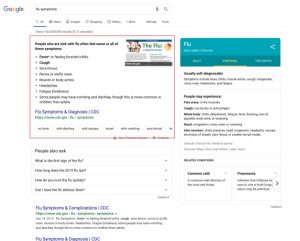Ad blocking is hurting the industry
Ad blocking isn’t new. There have been ad blockers since 2002 but consumers’ adoption curve increased dramatically in late 2012 and recent developments like Apple’s provision for ad blockers in iOS 9 in mid–2015 highlighted a growing threat to the publishing industry. According to a 2015 report by PageFair and commissioned by Adobe titled “The cost of ad blocking” –
- Ad blocker usage in the United States, alone, “essentially blocked an estimated $ 5.8 billion ”resulted in an estimated $ 5.8B in blocked revenue during 2014″. This figure is expected to rise to $ 10.7 billion in 2015 and to almost double that in 2016.
- Worldwide, ad blockers are expected to cost publishers and advertisers around $ 41.4 billion in 2016 from an estimated cost in 2015 of $ 21 billion.
- Putting these figures in perspective, the estimated 2015 global cost of ad blockers represents about 14% of the global ad spend based on an audience of 198 million monthly active users in the second quarter of 2015.
Publishers have responded in different ways in the last few months as the realization of ad blocking’s continued impact started to really hit home. I researched how some of the major publishers have responded to ad blocking. It is still too early to see which strategy will prevail but there are some early indications which strategies will probably fail. Keep reading for some fascinating insights.
How the industry is responding
Publishers’ ad blocker strategies can be broadly grouped into these categories:
- Block the blockers: Block consumers using ad blockers and force them to whitelist publishers’ sites and submit to ads.
- Engagement: Identify consumers using ad blockers and try persuade them to disable ad blockers on the publishers’ sites by explaining the impact of ad blocking on their content.
- Expanded choices: Diversify site monetization options and give consumers a choice of how to support sites.
The “Block the blockers” strategy
A few publishers have adopted a simple approach to ad blocking: if consumers want to use ad blockers, they shouldn’t be permitted to access content on the sites they block ads from.
German publisher, Axel Springer, gave visitors to its Bild publication a fairly simple choice: disable ad blockers or forget about seeing any content. This approach seems to have been met with some success at first glance. According to Mathew Ingram’s article on Fortune titled “Is Blocking Readers Who Use Ad Blockers The Best Strategy?” –
Matthias Dopfner, CEO of German media giant Axel Springer told the Financial Times that after implementing a similar block at its newspaper Bild, more than two-thirds of users chose to turn off their ad-blocking software. That meant 3 million more visits that could be monetized through advertising, he said.

An important insight from Axel Springer’s approach is that “only a tiny number followed the included link to become a subscriber to the Bild news site”. If the purpose was to simply expose more visitors to ads then it seems to be a successful strategy. On the other hand, the very low conversion of those visitors to paid subscribers suggests that even if they feel compelled to whitelist sites or disable their ad blockers, this approach will not necessarily entice them to become more lucrative, paid subscribers.
Other proponents of this strategy include Forbes and GQ (a Conde Nast publication). According to Digiday’s article titled “Forbes starts blocking ad-block users” –
The escalating battle between ad-dependent publishers and ad blocking has a new front: Forbes. The publisher last week started blocking access to the site to some users of ad-blocking software. Visitors using desktop browser ad blockers are greeted with a polite but firm message on the “welcome screen” ad page Forbes serves prior to landing on its site.
In return for allowing ads, Forbes offered consumers what it calls an “ad-light experience” for 30 days. Just what that means is unclear but Forbes has stated that it’s “not all or nothing”.
Visitors to GQ with ad blockers enabled were greeted with a banner inviting them to either disable their ad blocker or pay to read GQ content. According to another article on Digiday titled “GQ is now blocking its readers running ad blockers” –
For the payment part, GQ is using CoinTent, a micropayment system started earlier this year that lets publishers charge for access to an article or video. Once you click the pay button, you’re prompted to set up an account with a digital wallet that’s designed to make it easy to buy content around the Web.
The “Engagement” strategy
The basic premise of this strategy is that publishers are better served having a conversation with their visitors about the impact ad blocking has on their businesses; what their visitors’ concerns are and what publishers can do to mitigate visitors’ concerns while maintaining acceptable revenue streams. A number of prominent publishers have adopted this strategy, including The Guardian and Ars Technica.
The Guardian adopted a relatively light approach, prompting ad blocker users to become subscribers when it detected ad blockers while allowing access to the site:
This is smart. Well done, Guardian. pic.twitter.com/3ueok1Zrmp
— Mat Yurow (@myurow) June 2, 2015
The Guardian’s approach typifies this “Engagement” strategy, perhaps even borders on the “Expanded Choices” strategy. Speaking to Digiday, The Guardian’s global revenue director, Tim Gentry, hinted at interesting options:
“Offering a customized ad experience is an area I’m most interested in, and one in which we’ve yet to experiment. I don’t know how we do it, or how exactly it will work yet because it’s that early, but it’s a fascinating area to explore,” he said.
Ars Technica’s strategy is also a clear “Engagement” strategy. The tech publication started evaluating approaches to ad blocking back in 2010 which its Founder and Editor-in-Chief, Ken Fisher, explained in an article titled “Why Ad Blocking is devastating to the sites you love”. Fisher’s starting point was that many of Ars’ readers weren’t aware of the ramifications of ad blocking for Ars:
Did you know that blocking ads truly hurts the websites you visit? We recently learned that many of our readers did not know this, so I’m going to explain why.
Fisher makes a clear, cogent and sympathetic argument for why visitors to Ars Technica should permit ads (or subscribe):
My argument is simple: blocking ads can be devastating to the sites you love. I am not making an argument that blocking ads is a form of stealing, or is immoral, or unethical, or makes someone the son of the devil. It can result in people losing their jobs, it can result in less content on any given site, and it definitely can affect the quality of content. It can also put sites into a real advertising death spin. As ad revenues go down, many sites are lured into running advertising of a truly questionable nature. We’ve all seen it happen. I am very proud of the fact that we routinely talk to you guys in our feedback forum about the quality of our ads. I have proven over 12 years that we will fight on the behalf of readers whenever we can. Does that mean that there are the occasional intrusive ads, expanding this way and that? Yes, sometimes we have to accept those ads. But any of you reading this site for any significant period of time know that these are few and far between. We turn down offers every month for advertising like that out of respect for you guys. We simply ask that you return the favor and not block ads.
Ars’ subscription model offers real value to subscribers so this isn’t just a case of a payment to hide ads.
The “Expanded choices” strategy
The clearest proponent of this strategy is another technology and policy-oriented publication called Techdirt. Techdirt’s Mike Masnick described the publication’s approach an article titled “You Can Now Turn Off Ads On Techdirt” in September 2015. What distinguishes Techdirt’s approach from publications like Ars is that Techdirt doesn’t require a payment of some kind in exchange for the ability to remove ads:
This isn’t one of those “pay us to remove ads” deals. It’s up to you. That said, obviously if you disable ads we’re likely to make less money. So if you choose to do that, we’d appreciate it if you supported us in other ways, such as via our Insider Shop, where you can buy a membership that gets you certain perks, or through our Deals Store, where you can support Techdirt while buying some cool products and services. But, again, this is not a requirement. If you don’t like ads on the site, turn them off.
It is certainly a bold approach but the assumption that your fans will want to support you has a fair amount of support in various industries.
Positioning and tactics
The industry made an astonishing series of admissions that it had caused many of the difficulties that now face it through its representative, the iab which outlined its response to ad blocking in a blog post titled “Getting LEAN with Digital Ad UX”, beginning with the following:
We messed up. As technologists, tasked with delivering content and services to users, we lost track of the user experience.
The iab’s Scott Cunningham mirrored sentiment from a number of industry executives that, in its rush to use new technologies to streamline and boost challenged advertising models, the industry lost sight of user experience and alienated consumers in the process.
We engineered not just the technical, but also the social and economic foundation that users around the world came to lean on for access to real time information. And users came to expect this information whenever and wherever they needed it. And more often than not, for anybody with a connected device, it was free.
This was choice—powered by digital advertising—and premised on user experience.
But we messed up.
The iab also suggested that consumers may be targeted prior to making a purchase but not afterwards. This touches on consumers’ concerns that they are constantly tracked and presented with ads that have since become irrelevant and unwanted.
As an industry approach, it is encouraging. The question is whether it will sufficiently address consumers concerns that prompted so many to start using ad blockers in the first place.
Next steps
Publishers seem to be feeling their way around this new landscape. With the exception of Bild, I couldn’t replicate the feedback previously reported when visiting the sites with ad blockers. This suggests these publishers either had themselves whitelisted with ad blocker providers or are still experimenting with different responses to ad blocking. Either way, I predict an interesting 2016 for publishers as they continue experimenting with different strategies to tackle ad blocking.
This article is based on a series of articles called “Ad Blocker Strategies” that was originally published on my employer’s blog.
Image credit: Girl reading a newspaper, released under a CC0 Dedication
Digital & Social Articles on Business 2 Community(138)
Report Post







